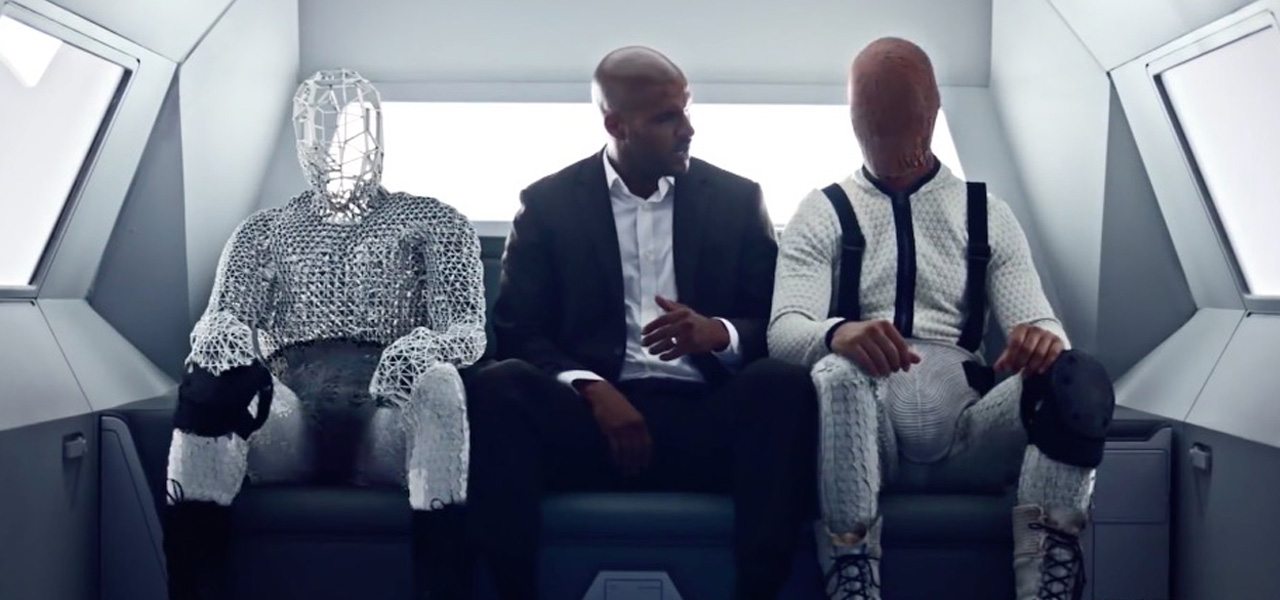
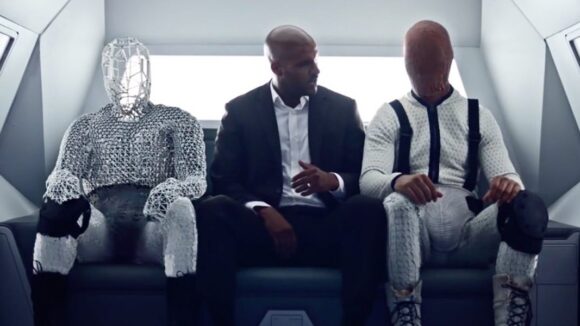
Step-By-Step: How They Made Those Disturbing Godflesh Scenes in ‘American Gods’
There was a whole lot of striking imagery in yesterday’s series premiere of Starz’ American Gods, an adaption of the Neil Gaiman novel, especially the show’s depiction of some of the gods in human form.
The show’s producers call this stylistic approach ‘Godflesh.’ The main character Shadow Moon (Ricky Whittle), who is thrust into a world of old gods versus new gods, witnesses these human-like beings who have very different skin and body surfaces.
Visual effects played a huge role in bringing the Godflesh look to life, thanks to a custom-built camera rig and a mix of photogrammetry and 3D animation techniques by visual effects studio BUF. Cartoon Brew spoke to members of American Gods’ visual effects team to find out how, step-by-step, the Godflesh work was created.
Step 1: The concept
The idea behind Godflesh was the representation of a god in all of their ‘majesty’ – they’re in human form but also in thought form. Shadow sees them for the first time when he meets the new god Technical Boy (Bruce Langley). The flesh of these gods melds into different things, from cables and wire, to fleshy pieces and other materials, but still in the shape of a human.
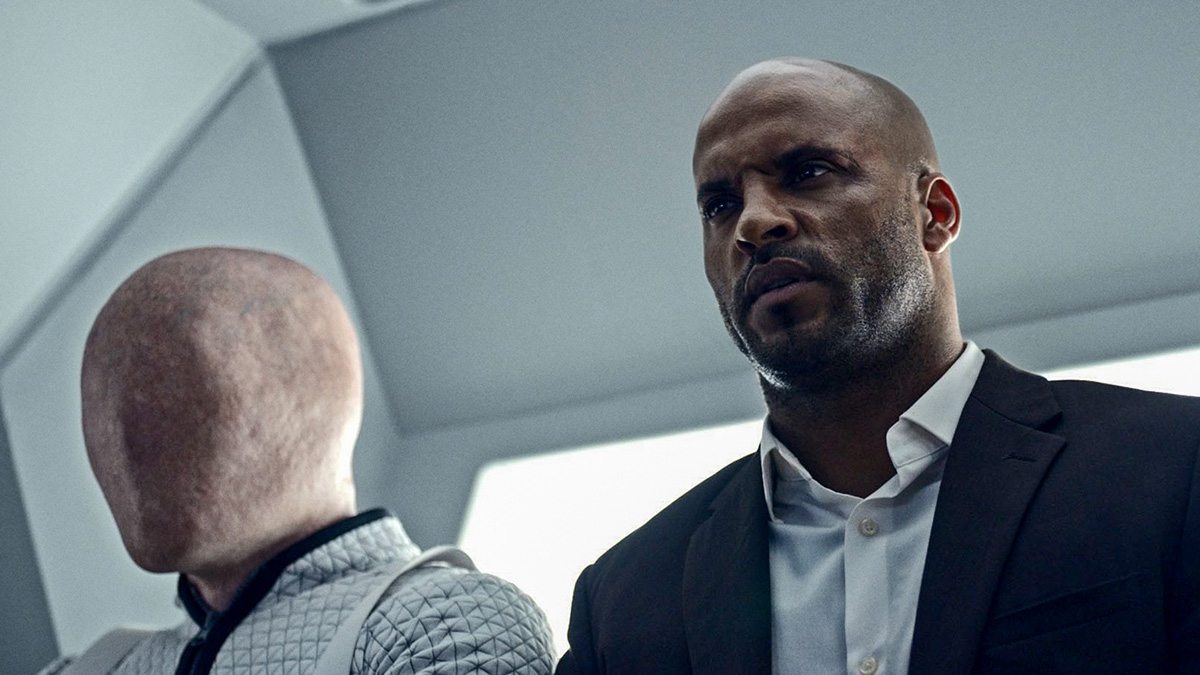
That meant the visual effects crew had to find a way to acquire a performance from an actor which was not just motion capture but also representative of their whole body. That acquired performance could then be used to ‘re-skin’ the actor.
“The dictum was to essentially get a volumetric performance capture on set during the normal course of production,” explained visual effects designer Kevin Tod Haug. “So the idea was to be as light on production as you possibly could be so that when that scene came up we would slide in some sort of rigging, capture the volume in the middle of that same lighting, and then get out.”
Step 2: Shooting Godflesh
A number of different set-ups were tested to work out how to capture this volumetric data. Initially a rig with 20 cameras in stereo pairs was tried out, but it proved difficult to synchronize so many together. In the end, a rig of between five and seven digital cameras was devised. It was made up of the main ARRI Alexa camera and smaller URSA Mini cameras from Blackmagic Design.
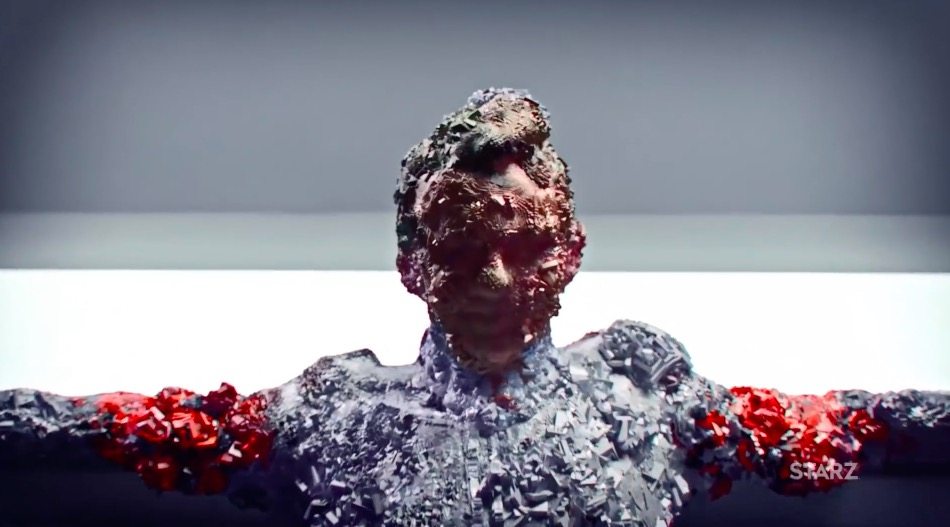
The whole point was to be nimble, since American Gods was filming fast like most television productions. As visual effects director of photography David Stump noted, “those URSA cameras were very synchronizeable, and they were light and portable enough, and flexible enough, that we could just fly them in on a moment’s notice and build the array and shoot, and tear it out in a live action scenario.”
On set, the actors were filmed performing the roles. Initially, the system was imagined without the need for tracking markers to be placed on the actors’ faces or bodies, but some markers were eventually added, in order to deal with difficult lighting conditions and to make it easier for tracking the cg animation.
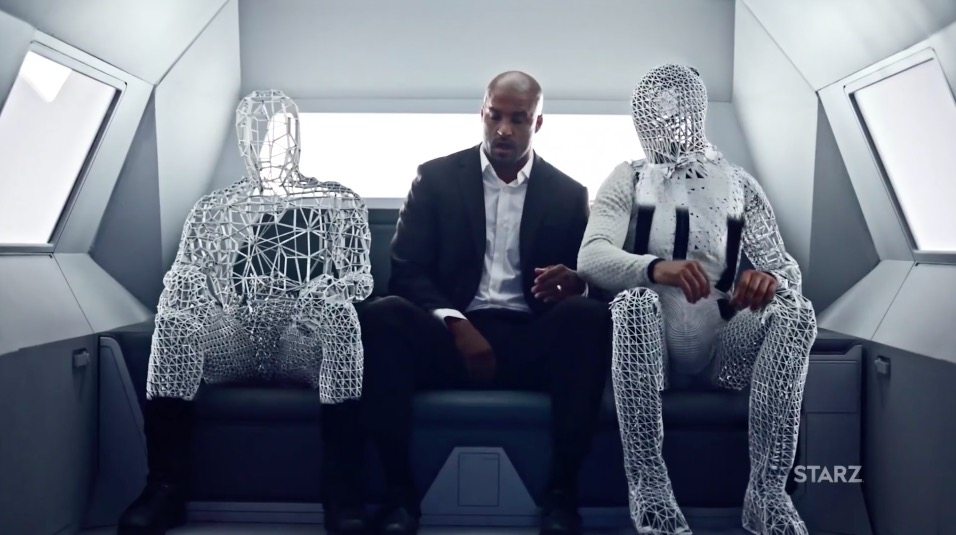
Step 3: ‘Re-skinning’
BUF in Paris then took that footage filmed with the camera rig. Their task was to extract the performance capture and utilize the multiple angles of the actors to re-skin them into the Godflesh look. It was effectively a photogrammetry solution (where multiple photographs are used to build a 3d model and textures). In this case, however, it was like ‘moving photogrammetry.’
“BUF is just really great with working with photogrammetry of one kind or another,” said Haug. “They’re sort of the inventors of photogrammetry as a cg technique in our business.” [BUF worked with Haug on the groundbreaking photogrammetry effects in Fight Club].
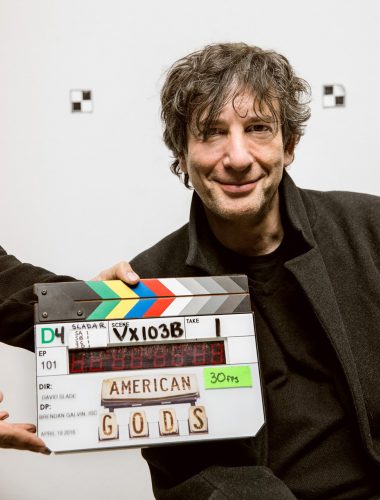
“If you compare it with, say, regular motion capture,” added visual effects supervisor Jeremy Ball, “then BUF was not just generating an animated skeleton that they’re then applying to a model. Instead, they’re actually getting, at 24 frames per second, a shifting volumetric 3D mass of pixels. They’re actually getting a kind of moving sculpture.”
In fact, the visual effects team considered these more like three-dimensional voxels, rather than pixels. And they even gave the technique a name – ‘Sladar’ – in reference to the director David Slade.
The result was that BUF could use the Sladar to drive the different kinds of animated ‘skins’ on the gods, such as wire mesh. It was something the studio was able to control with high precision given the enormous amount of data at its disposal.
And Haug believes there’s more that can be done with the system – for American Gods they pulled back slightly to suit the needs of the story.
“I have to say that we touched about two per cent of its potential.”

